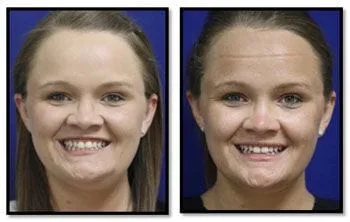
It’s the same you………….. refreshed!
In this day and age of defining “beauty”, we all know that true beauty comes from within.
A few wrinkles, a few lines – they have been well earned and yes, they are a part of our own individual story. We all get that.
But………..would seeing less of them…….make YOU feel better when you look in the mirror?
That’s what this is all about – how you feel.
If you want to see less of those lines - botulinum toxin (also known most commonly as Botox, Xeomin, Dysport) may be the answer.
Let's check it out...

(treatment provided by Dr. Debra Balogh-Crombie)


(treatment provided by Dr. Debra Balogh-Crombie)
So…………what IS it?
Botox (botulinum toxin) is a neurotoxin created by the bacterium Clostridium Botulinum.
It is used to reduce the strength of targeted muscle tissues.
Botulinum toxin has a long, successful history of therapeutic use – over 30 years! In 1989 it was FDA approved for the treatment of strabismus (a condition in which the eyes to not properly align with each other when looking at something) and blepharospasm (eyelid twitching). The next year, 1990, it received FDA approval for cervical dystonia (a painful condition where the neck muscles contract involuntarily causing the head to twist or turn to one side). 2002 the FDA approved Botox for moderate to severe wrinkling in the glabellar area (also known as “Mom Brow”/“Dad Brow” – the area between the eyebrows which creases when the eyebrows are brought together).
In 2011 the FDA approved Botox for first line treatment for chronic migraines.
So, there are seven distinct and separate neurotoxins produced by Clostridium Botulinum and they are designated as Types A-G. Type A is commercially available as 5 different products: Botox, Botox Cosmetic, Dysport, Xeomin and Jeuvea.
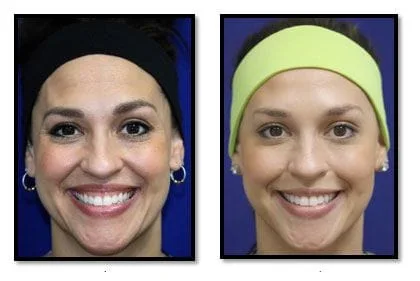
(treatment provided by Dr. Debra Balogh-Crombie)
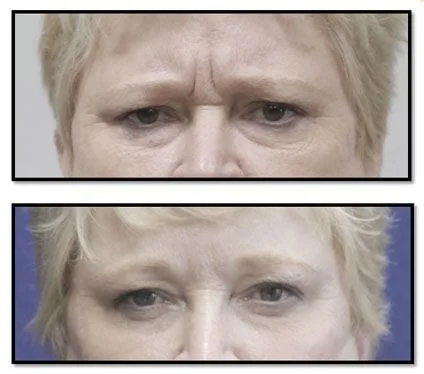
(treatment provided by Dr. Debra Balogh-Crombie)
So how does Botox work?
First of all, let’s review how that wrinkle got there in the first place! Most lines on the face are caused by the repetitive creasing and folding of the skin by underlying muscles. As time marches on, the muscles of facial expression become hyperdynamic as a result of habit. We wake up one day and wonder – how did that get there? Happens to all of us! Well, Botox works by binding to the nerve which innervates the muscle that made that happen – end result? The muscle relaxes and the skin “recovers” - smooths out. When Botox is injected, it takes approximately 1 ½ -2 hours for it to bind to the nerve and 2-10 days to fully exert its effect. Retreatment is typically in 3-6 months. Over time, the cumulative effect of regular use of Botox obtains best results and oftentimes patients will note their treatment seems to “last longer”.

(treatment provided by Dr. Debra Balogh-Crombie)
Sounds great but what happens when it wears off?
When the effect of Botox wears off, strength gradually returns to the muscle (along with the wrinkles caused by that muscle’s movement - boo) but – and here’s the great part – the wrinkles are not any worse than they were to begin with!
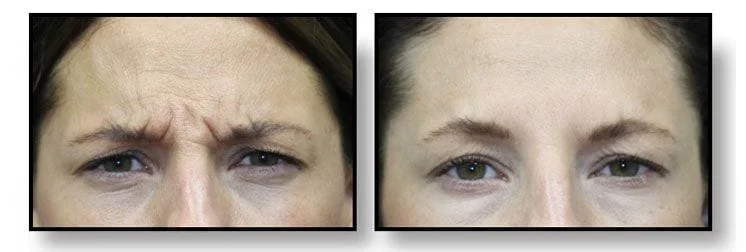
(treatment provided by Dr. Debra Balogh-Crombie)
Let’s bust those myths about Botox………
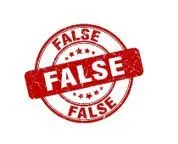
“You lose sensation and have numbness” “Botox pulls the skin taut” “Botox is dangerous when used for cosmetic purposes” “Smoothing a wrinkle isn’t worth getting botulism” “Botox is new and untested”
Let’s tackle those last three first………..Botulinum toxin’s 30+ year history of successful therapeutic use speaks for itself. Botox is used in very small doses to smooth wrinkles. Mom Brow? Maybe 20 units. Crow’s feet? Perhaps 4-16 units as a starting dose – just for example. The lethal dose of Botox in humans is 2,500 - 3,000 units!
You don’t lose sensation. You don’t have numbness. You may have a slight transient “heavy” feeling but it is temporary and resolves quickly.
Botox does not pull the skin taut. It only effects the underlying muscles and relaxes them which in turn relaxes the skin.

(treatment provided by Dr. Debra Balogh-Crombie)
So, what are the side effects – what’s the downside?
As with any treatment, there are always possible side effects or complications. Possible side effects of Botox may include bruising (plan your treatment >2 weeks from any important event to be on the safe side), occasional forehead heaviness, transient headache, temporary discomfort, redness, minor swelling of injected area, watery eye. These all are temporary and resolve quickly.
Possible complications of Botox include brow ptosis (drooping of the eyebrow), eyelid ptosis. Rare complications include lazy eye and lip ptosis.
I’m pregnant and would like to get my eyes done – can I?
It’s better to wait until after your bundle of joy arrives and you are no longer breastfeeding. There has been little research on Botox and expectant/nursing moms so better to play it safe.
Any other contraindications?
Yes a few. Botox is contraindicated for those with a hypersensitivity to Albumin 9 Human Blood Product. Also, those with neurological disorders such as ALS (Lou Gehrig’s Disease), myasthenia gravis or Lambert-Eaton Syndrome.
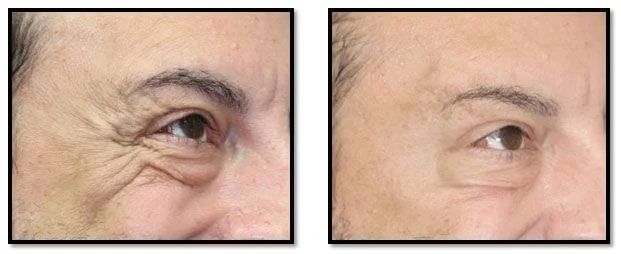
(treatment provided by Dr. Debra Balogh-Crombie)
I’m interested - what areas can I get treated at your office?
Forehead wrinkles

Glabellar area (frown lines aka “Mom Brow” or “Dad Brow”)
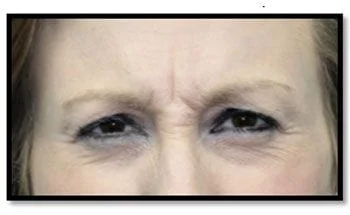
Crow’s feet

Radial lip lines (smoker’s lines, water bottle lines) and “lip flip”
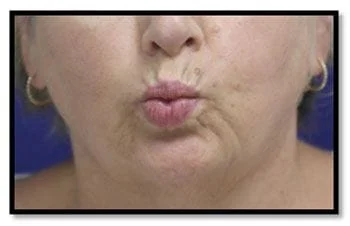
Bunny lines
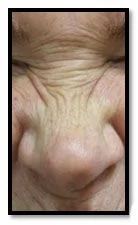
Gummy smile

Cobblestone chin
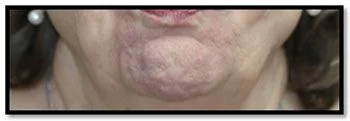
Jowls / reverse smile
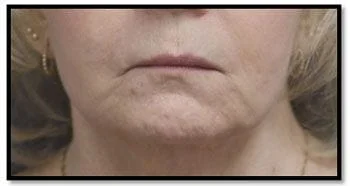
TMJ, Headaches, Migraines……
Botox can help!
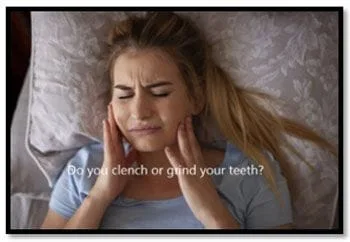
In addition to its cosmetic benefits, botulinum toxin is also a significant therapeutic treatment for the following: teeth grinding (bruxism), clenching, headaches, migraines, waking up with sore jaws and/or teeth, sore neck muscles, TMJ issues, obstructive sleep apnea.
Botulinum toxin was approved by the FDA in 2011 as first-line treatment for chronic migraines. These headaches oftentimes can be triggered by bruxism (grinding the teeth) and/or clenching - habits which can also be a side effect of obstructive sleep apnea and temporomandibular disorder. Precise placement of botulinum toxin in key muscles associated with orofacial pain is highly effective in improving quality of life for people who suffer from these conditions.
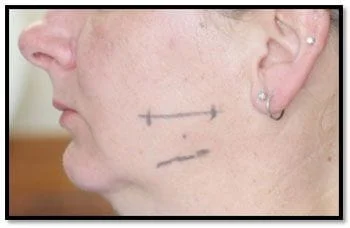
(treatment provided by Dr. Debra Balogh-Crombie)
(photo identifies precise placement of botulinum toxin for one of several treatments available)
It always helps to hear what our patients who have had this treatment have to say……….
Hannah M. “I used to have clicking in my jaw every morning, jaw tension throughout the entire day along with daily headaches. I had no idea I clenched my teeth until Dr. Debra did a thorough exam on me. I had Botox treatment for clenching and have not had a headache since my treatment! I have 100% improvement and it has absolutely changed my daily life for the better. Anyone who suffers from clenching or grinding their teeth and headaches, I simply cannot recommend this treatment enough!”
Jen L.“Over the last 30 years I haven’t been sleeping well and having lots of jaw pain with headaches when I woke up. I learned of Botox for TMJ and thought why not? I’ve chewed through so many night guards. The initial treatment improved my quality of sleep and eased the jaw pain and headaches. I had an enhancement two weeks later and am feeling great. I still have a little tired feeling but the pain is 85-90% gone. This really helped me and I would recommend to anyone dealing with jaw pain.”
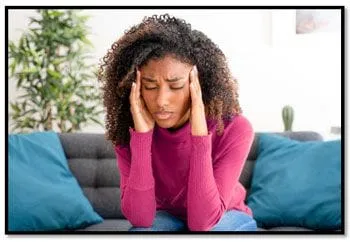
Dr. Balogh-Crombie has completed extensive training in temporomandibular disorder and obstructive sleep apnea and has been treating affected patients for over 20 years. She is certified in botulinum toxin therapy for the treatment of temporomandibular disorder, headaches and orofacial pain. If any of these issues affect you and are affecting your quality of life – contact our office for a consultation - we look forward to helping you feeling better.
In summary, Dr. Balogh-Crombie’s philosophy of conservative, effective treatment supports the position of minimizing resistance potential towards Botox. Finding the lowest effective dose to deliver the ideal cosmetic/therapeutic results her patients desire, waiting two to four weeks post-treatment for follow-up and retreating no sooner than three months is the protocol she herself follows for her own treatment.

Dr. Debra Balogh-Crombie
American Academy of Facial Esthetics, American Academy of Craniofacial Pain,
American Academy of Dental Sleep Medicine, International Association of Orthodontics,
Academy of General Dentistry, American Dental Association,
Ohio Dental Association, Northeast Ohio Dental Association
Interested in a “fresher” you?
Give us a call and our team will be happy to set up a consultation appointment to review your treatment options!

